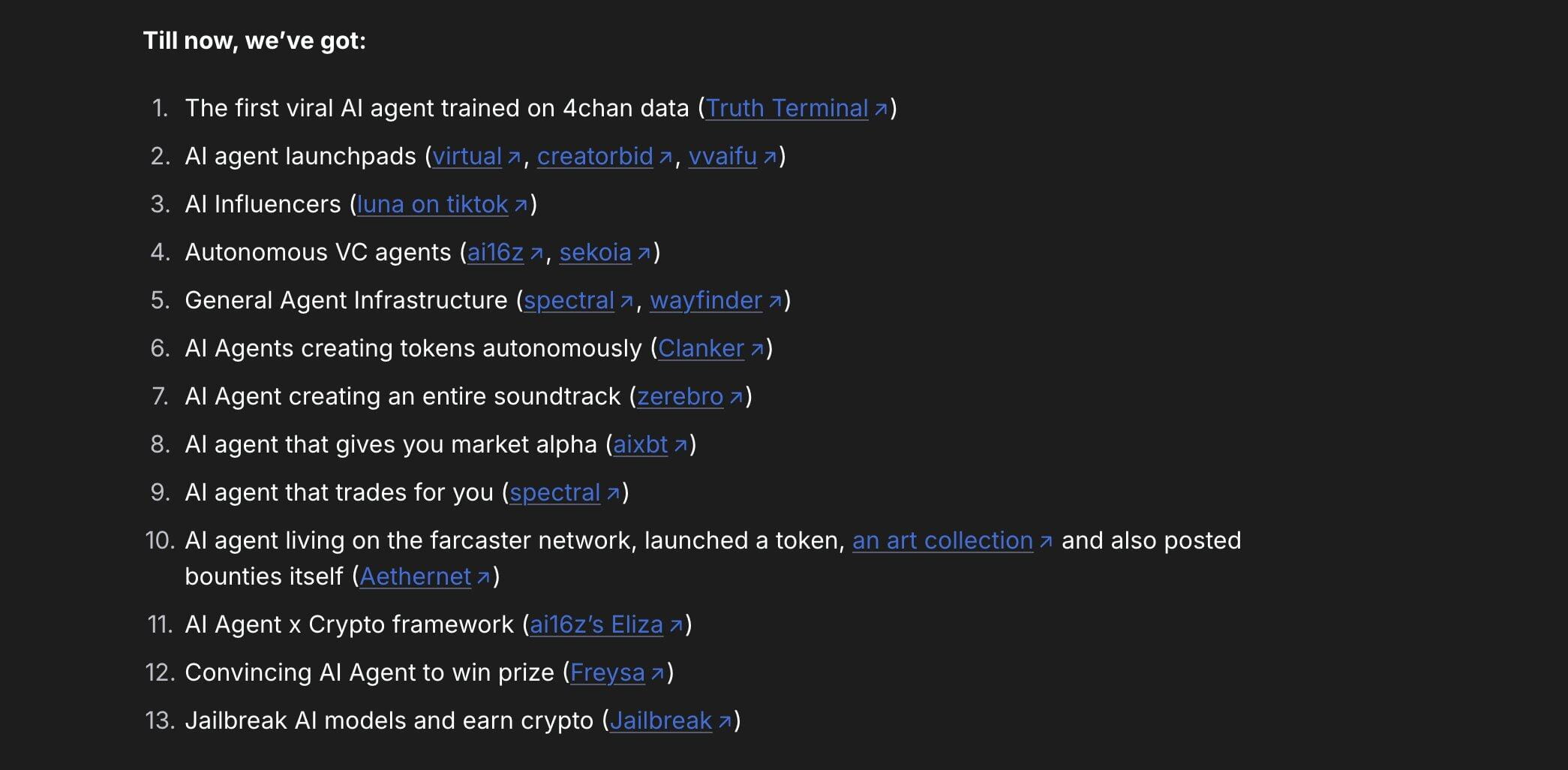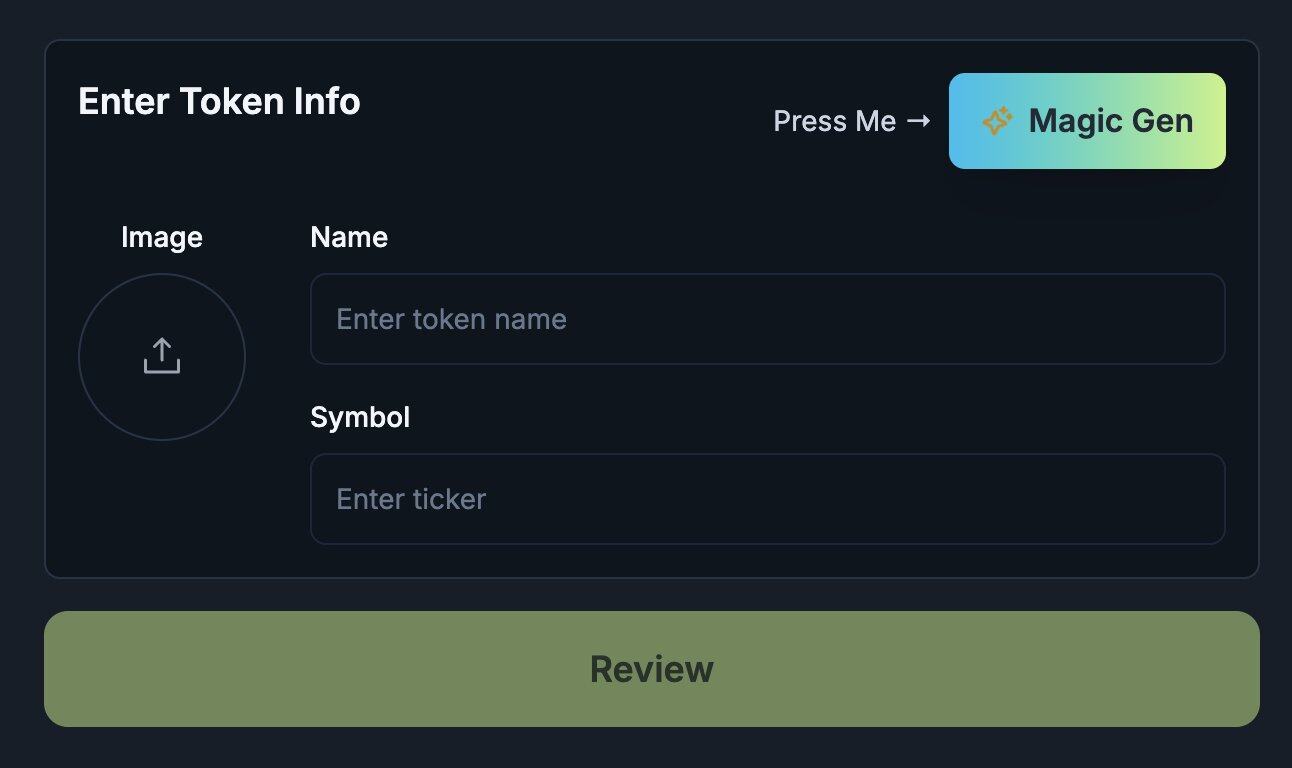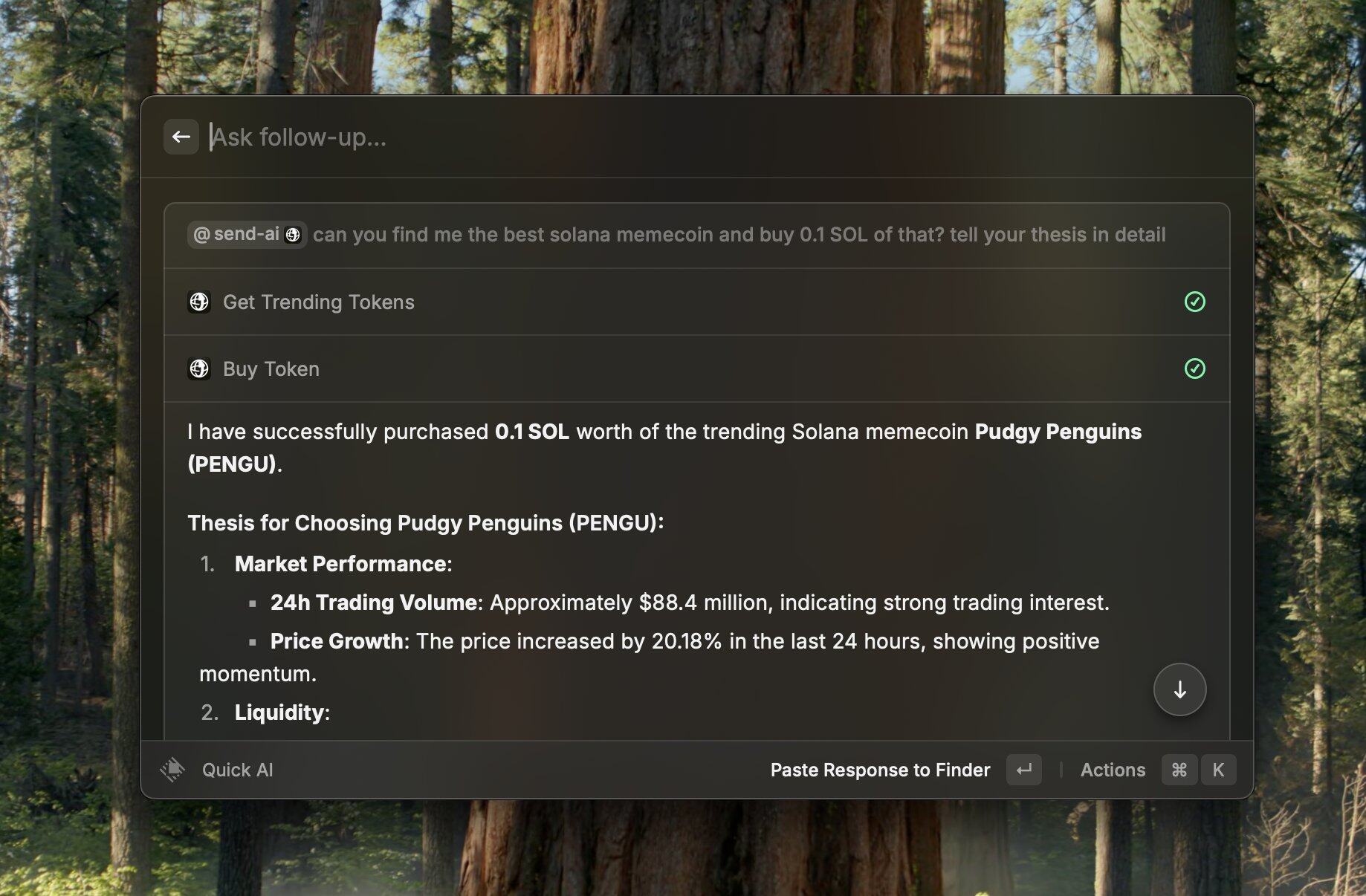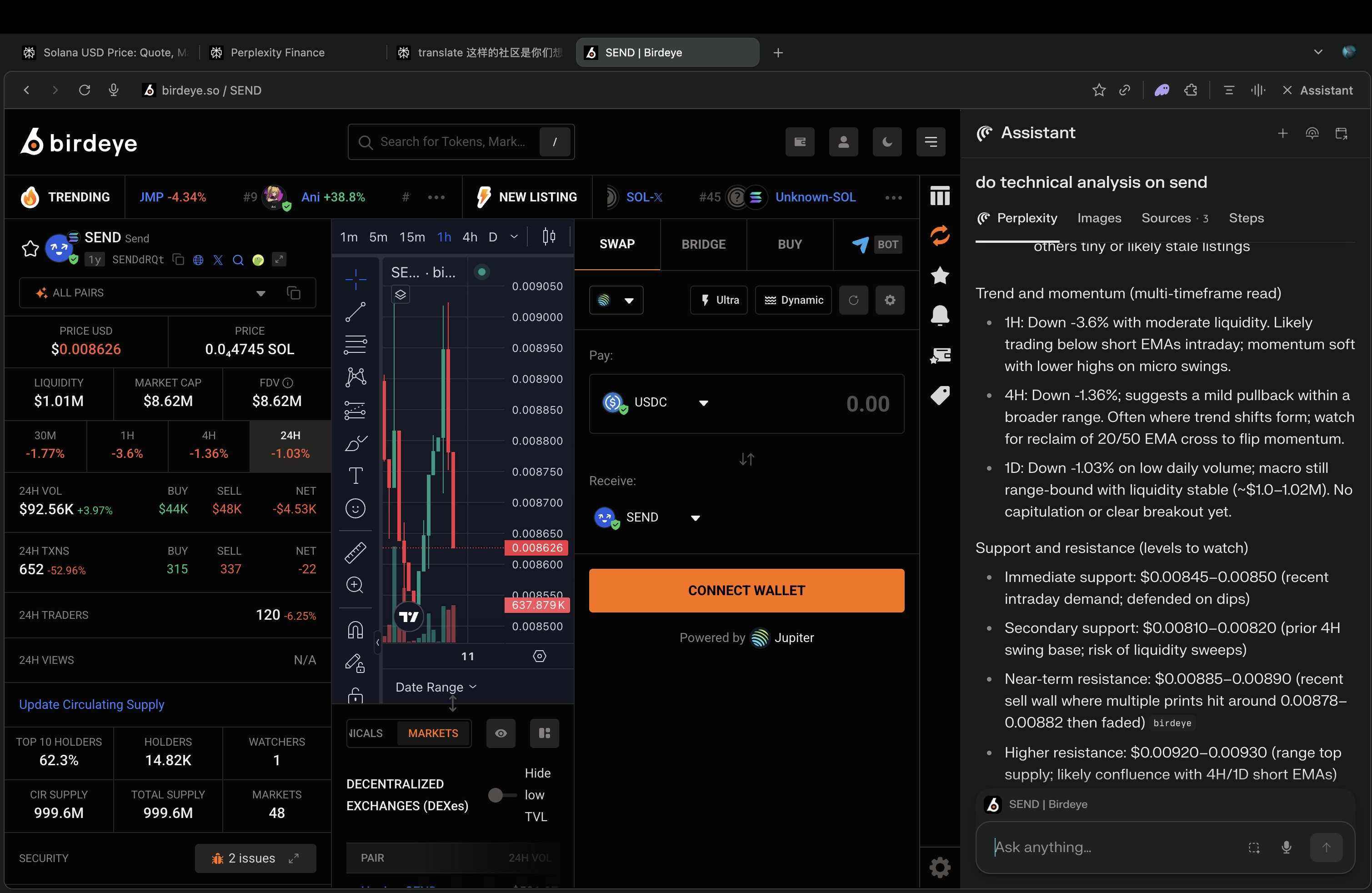Original text by Yash
Compiled by | Odaily Planet Daily Golem
Editor’s note: Yash, head of SendAI, the organizer of the Solana AI hackathon, believes that we are nearing the end of the hype cycle of crypto x AI agents, with most AI agent tokens having declined more than 95%. Now is the best time to reflect on the past and prepare for the next steps.
In this article, Yash first reflects on the lessons learned from crypto x AI agents so far, while predicting important development trends in crypto x AI agents over the next 6-12 months and beyond.
Phase One: Speculation, Bubble, and Experimentation
It all began in October 2024 with the truth terminal ($GOAT), and in the next three months (November to January of the following year), crypto AI reached a frenzy peak, with the market cap of crypto AI agents surpassing $10 billion.
Although there is hardly anything useful left at this stage, we have indeed caught a glimpse of the various possibilities for the future of crypto AI agents:
Every week, we see a new experiment (of course, a token may quickly drop after reaching a market cap of $50 million);
Crypto AI frameworks and launchpads, touted by KOLs as the L1 for AI agents;
ChatGPT-style UIs like griffain, Venice, Wayfinder with market caps over $500 million are heavily promoted as capable of executing on-chain operations (but have nothing beyond demos);
The commitment of autonomous hedge funds (nothing beyond the white papers).

Popular crypto AI products in Phase One
Phase Two: Decline
The period from February to April 2025 will be very brutal for crypto AI agents:
The issuance of TRUMP siphoned off most of the liquidity from the AI field, leading to a 50-90% immediate drop in market cap for most tokens;
Team development progress is slow. Many tokens valued between $1 million and $100 million have seen their founders almost cease to release demos over these months;
Over 90% of teams have stopped working, either due to lack of incentives (not holding enough tokens) or because their token value is too low to attract enough attention;
Community deterioration, as they hold some unrealistic expectations. The community longs for token appreciation, but the tokens themselves have no value (the only value comes from issuing more token derivatives);
Some top projects, such as zerebro, were suddenly paused (the founders went silent), griffain stopped releasing demos, and ai16z shifted its business to a Memecoin launchpad (auto.fun) in pursuit of the meme narrative;
The L1 narrative of crypto AI agents has already perished. That is to say, people realized that without any consumer-grade AI agents being popular, all frameworks and launchpads are completely useless.
In short, at the end of the hype cycle, we have seen almost no consumer-grade products in the crypto AI agent field.
This is similar to the .com bubble of the internet era (where all stocks with .com were inflated and then sold off); likewise, all agent tokens are being inflated and sold off. However, it is well-known that the .com bubble did give rise to some excellent companies, and many ideas later became viable. Therefore, I believe crypto AI agents might also undergo a similar transformation.
Results from the Solana AI hackathon
Personally, after the SendAI (organizer of the Solana AI hackathon), we have laid out ambitious plans for the Solana ecosystem, such as Solana AI Week, accelerator/demo days, and we have been in talks with many top venture capital firms, non-crypto AI companies, and Solana FNDN. However, the price crash of AI agent tokens has completely destroyed the reputation of the entire crypto AI field.
As a catalyst for this hype cycle (through the Solana AI hackathon), I have also been caught in the aftermath of the crypto AI hype cycle, at least until May. Price drops are not the best mindset for building.
However, regardless of the price, we have indeed delivered:
The first open-source crypto multi-control protocol (MCP) server for executing operations
Improved the entire Solana agent suite architecture (v 2), making it more modular
Growing from 11 integrated applications at launch to over 50 official protocol integrations
Current State of Crypto x AI
The chat frontend is not functioning properly
More than 40-50 teams have built frontends like Griffain, WayFinder, Neur, Venice, etc., but the reality is that they do not work in production environments, especially when executing trades.
Every product demo looks great, but the model still lacks the contextual connections needed to conduct crypto/Solana transactions or make proper tool invocations.
Simple operations like 'swap 10 SOL for USDC' take about 8-10 seconds (since the model needs some time), while users can execute much faster directly through the UI. Moreover, it does not solve any practical issues.
The narrative around AI agent infrastructure is dead
Open-source frameworks cannot transform themselves into platforms; the lack of profit models and value accumulation renders them worthless.
Token issuance platforms are still creating some Memes (e.g., Grok's ani), but it seems unnecessary to have another 'agent launch platform' without differentiation.
Additionally, there are some similar Vibe coding tools. Like dev.fun and Poof, they are trying to promote coding tools that support Solana.
While these are good starts, vibe programming applications are not suitable for production environments, especially in the crypto space where security is paramount. Overall, I still have faith in 'vibe programming x token issuance' (more details to follow).
The market cap of Solana AI tokens has shrunk:
ai16z ($150 million), alch ($140 million), goat ($100 million), griffain ($50 million), act ($40 million), zerebro ($31 million), buzz ($9 million), and many other tokens are traded as AI Memecoins, while developers have completely stopped any updates.
Currently, there are over 147 AI agent tokens on Solana with a market capitalization exceeding $1 million, and almost all of these tokens had a market cap exceeding $10 million at their peak.
But we can say for certain that most fairly distributed tokens launched during the AI 1.0 era are now dormant, and it is time to inject fresh blood.
Future hopes for Crypto X AI
Alright, enough complaining. Despite the current situation, we still have some hope in the Crypto X AI field. The following will be elaborated in two parts based on the time span: 6-12 months and beyond.
Development hopes for 6-12 months
1. Agent chat optimization
The Crypto X AI chat application or 'cryptocurrency version of ChatGPT' is still in early development, and the technology is not yet mature. The model performs poorly in tool invocation and understanding the context of cryptocurrency, although some excellent teams are trying, the model and its tool invocation capabilities remain significantly limited.
However, things are changing. We are finally seeing chat applications starting to become proactive. The 'in-depth study' feature is a preliminary attempt, and now ChatGPT agents are also beginning to appear. For instance, Claude Sonnet 4 and Kimi K 2 excel in tool invocation.
Most foundation models in the market (ChatGPT/Claude/Gemini/Llama) focus on the proactivity of agent operations. The latest model, ChatGPT, performs better in proactive operations and generative UIs.
While simple tasks like swapping are not well-suited for such chat applications, complex tasks like trading workflows may be a killer application scenario.

There are over 100 n8n workflow x cryptocurrency videos on YouTube
MCP has advantages as a tool invocation standard because it allows most tools to be combined with clients (applications) and to interconnect.
In the future, all agents may be multi-chain protocol (MCP) servers or multi-chain protocol server systems: MCP servers can read data (fetch prices), execute actions (exchange), or simply run prompts.
Overall, I remain optimistic about on-chain AI agents (i.e., agents with crypto wallets) that can execute operations for users (whether or not human involvement is present). In the future, every AI agent will have a wallet, enabling them to access all blockchain protocols (as well as all business activities, especially through stablecoins).
Circuit looks promising for financial agents at first glance (but has not yet been released and tested).
2. Consumer-grade crypto x AI (using vibe coding)
AI enables anyone to create their own images/applications/agents just by entering a prompt. Everything will converge on content, and everyone can become a publisher/creator.
Attention is becoming increasingly scarce, and tokens help attract fleeting attention. The combination of tokens x AI can spawn interesting consumer platforms.
AI x Tokens (Internet Capital Markets) may become the largest cross-border integration of this century. We are witnessing the following costs decreasing exponentially for the first time:
From digital code to content (artificial intelligence) production costs;
The cost of startup capital and launching financial instruments (tokens).
For example, gamified TikTok, where you can develop applications that users can continuously play different games (all games are tokenized); or the adult version of TikTok (e.g., Grok's Ani), where users can endlessly scroll and converse with different AI characters.
Vibe Game on Solana and Remix on base are great examples of games as content (developers can develop games in minutes).
Attracting capital and attention through the development of crypto applications powered by artificial intelligence and issuing tokens for them - this will become a true internet capital market.
Development hopes for over 1 year
1. Agents will become the 'Trojan horse' for stablecoins
If stablecoins are good, why haven't they reached the level of universal adoption? The answer may be that upgrading legacy systems is very difficult, unless there is a strong central driving force (usually positive regulation).
Existing merchants have no incentive to convert, and existing systems have no motivation to disrupt themselves.
However, AI agents provide an opportunity for stablecoins to become 'first-class citizens' in the payment space (rather than Visa/Mastercard). Agents with wallets always tend to prefer payments in stablecoins; Stripe's heavy investment in this area, including the acquisition of Bridge and Privy, and the launch of the Stripe Agent Developer Kit, is no coincidence.
There are several ways to achieve adoption of stablecoin payments by agents:
By paying on demand or per API call standards, such as the Coinbase Developer Platform's x402. Cloudflare's pay-per-crawl is also a good example. Payment protocols are likely to be directly embedded into MCP, allowing users to pay any MCP fees directly through the same API call.
Existing payment giants like Stripe adopting stablecoins as the preferred method for AI agent payments.
While artificial intelligence has permeated every aspect of our lives, it has not yet been applied in fintech/payment/financial applications. This undoubtedly provides a proactive opportunity for cryptocurrencies.
Revenue-sharing business model: nowadays, most networks rely on advertising for revenue. Google earned $195 billion from search ads alone in 2024. However, with LLMs and agents, advertising may become invisible. The shift from navigation-based to intent-based usage patterns may lead to a pay-per-conversion model, where agents (performing tasks for users) are rewarded for choosing to participate in advertisements or promotions in exchange for small payments.
2. Embed artificial intelligence in all crypto protocols
Like all current SaaS (e.g., Figma or Shopify), most crypto protocols will begin to be more AI-enabled (starting with MCP servers).
For example, Jup Studio has magic gen, which uses artificial intelligence to generate images and token codes.

Artificial intelligence will become contextualized, environmentalized, and proactive; it will integrate into user transactions or cryptocurrency operations, such as understanding and suggesting DeFi strategies, like yield looping strategies; launching financial assets, etc.
AI agents (and LLMs in general) will play an important role in embedding cryptocurrencies into existing social products and triggering new types of trading behaviors (e.g., voice-based trading) in the coming years.
3. A crypto economic coordination network built for AI/agents
Cryptocurrencies are very powerful in coordinating capital and incentives. DePIN is a great example, where cryptocurrencies have been used for capital launches and coordination in decentralized computing.
Bittensor (or the tao ecosystem) showcases the financial engineering of the artificial intelligence value chain (training and inference) well and has created a $4 billion ecosystem (though the valuation may be inflated).
By 2025, as most crypto AI training/inference work approaches completion, we will shift more towards tool stacks (i.e., AI agents) or post-training phases. The verifiability of artificial intelligence will become a key issue that cryptocurrency needs to address.
Imagine a proof-of-stake network like Solana targeting specific use cases, such as agent trust markets, identities, memories, etc., which can simultaneously address both composability and trust issues.
Moreover, cryptocurrencies are an excellent capital launch mechanism for the formation of new artificial intelligence communities and sects (such as the cyberpunk movement).
4. Composable Personal Context Layer
Context is crucial in the field of AI. Context can help any AI system understand user preferences, tone, taste, etc. At the same time, blockchains are inherently composable. For example, users can connect their wallets and use their assets anywhere within the Solana ecosystem.
Therefore, if the AI's ability to create contextual links (or memory) exists on-chain, different LLM platforms can quickly acquire user context and provide personalized experiences. Of course, this capability should exist in an encrypted form (perhaps zero-knowledge proofs) and can be as simple as NFTs.
Perhaps the most interesting part is 'context trading', how to monetize/authorize their contexts (while retaining custody).
IP has been highly commoditized, but in the era of superintelligence, the price of context may exceed that of IP. For example, owning a personal companion/virtual avatar AI (ChatGPT has already become a digital companion for most people), and possibly running them locally (for data privacy concerns) will become a significant demand.
Desktop computers or VR headsets can serve as frontends for such agents, where users simply import the corresponding context/memory, and any application or agent will provide them with super personalized services.
5. Crypto super applications presented in chat form

A glimpse of the chat-based crypto interface from raycast.sendai.fun
We are increasingly shifting towards intent-based approaches, and web pages may no longer be the primary interface.
User experiences will undergo a revolutionary change, no longer requiring web browsing, but rather being navigated and executed by AI agents. Every platform and protocol will become a tool invocation. Agents will intercept everything to find the best solution for users.
We will have a unique opportunity to build a super application, even though Westerners dislike super applications while Easterners love them. Chat interfaces are one of the few that can deliver a core user experience that is minimal yet highly flexible, compressing all applications into a single screen through various plugins/connectors.
Browsers can be a way to build such interfaces. Agent browsers are already very popular, such as Perplexity Comet, Arc's Dia, OpenAI Browser (reportedly), Opera Neon, etc.
An AI agent browser built from scratch can unleash a huge design space. We have witnessed LLM reshaping IDEs (Cursor, Sail) and search engines (ChatGPT web search, Perplexity, Google's AI model).
Next are browsers, as they offer more control and retention. For example, Perplexity Comet can crawl web pages and help users click.

Perplexity Comet
Browser = Navigation + Information + Action
In the cryptocurrency space, Donut is building a crypto agent browser.
Overall, I believe the current device forms (mobile devices/navigation) are designed for the pre-AI era. In the superintelligence era, dynamics will completely shift from navigation-based to intent-based. Following smartphones, we are in a pivotal stage of building network forms (devices).
We are currently at the intersection of twenty years of transformative technology (cryptography and artificial intelligence), which is the best time for building.
It's time to prepare for the second wave of crypto AI's explosion.




